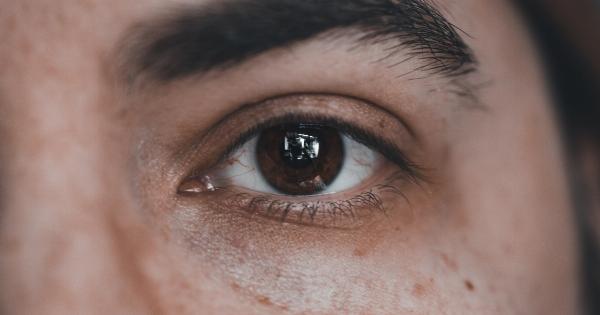As a parent, you want the best for your child. You want them to excel academically, socially, and emotionally.
But did you know that something as simple as their vision can play a significant role in their success at school? Vision testing is an essential tool that can help identify and correct visual problems that may be hindering your child’s learning and overall development. In this article, we will explore the importance of vision testing and how it can positively impact your child’s performance in school.
The Link Between Vision and Learning
Vision is one of the primary senses through which we acquire and process information. About 80% of what children learn in school is presented visually, making good vision crucial for academic success.
If a child has an undetected or untreated vision problem, it can significantly impact their ability to absorb and comprehend information, leading to struggles in the classroom.
When a child has difficulty seeing clearly, it can affect their reading, writing, spelling, and even their ability to pay attention and concentrate.
They may experience frequent headaches, eye strain, and difficulty focusing on close-up tasks like reading or writing. Vision problems can also lead to a lack of confidence, low self-esteem, and frustration, causing children to become disinterested in school and their overall academic performance to suffer.
The Importance of Early Vision Testing
Many parents assume that if their child does not complain about their vision, they must be seeing well. However, vision problems can often go unnoticed, as children do not always realize they are experiencing difficulties.
This is why early vision testing is crucial.
The American Optometric Association recommends that children have their first comprehensive eye exam at six months of age, followed by routine exams at age three and again before starting school.
Early detection and treatment of vision problems can help prevent or minimize any potential impact on your child’s learning and development.
During a vision test, an optometrist will evaluate various aspects of your child’s vision, including their visual acuity, eye coordination, depth perception, and overall eye health.
They will also check for common vision problems such as nearsightedness, farsightedness, astigmatism, and eye teaming or tracking issues.
Common Vision Problems in Children
Children can experience a range of vision problems that may affect their classroom performance. Some of the most common vision problems in children include:.
Nearsightedness (Myopia): Children with nearsightedness have difficulty seeing objects in the distance. This can make it hard for them to see the board or screen at school, leading to squinting and eye strain.
Farsightedness (Hyperopia): Farsighted children may have trouble seeing objects up close, which can affect their ability to read, write, and complete close-up tasks efficiently.
Astigmatism: Astigmatism is a common vision problem where the eye has an irregularly shaped cornea, causing blurry or distorted vision. Children with astigmatism may have difficulty with both near and distance vision.
Eye Teaming and Tracking Issues: Problems with eye coordination and tracking can affect a child’s ability to read smoothly along a line of text or follow objects with their eyes.
They may skip lines, lose their place while reading, or have difficulty concentrating on tasks that require visual tracking.
These are just a few examples of the vision problems children may face. Through comprehensive vision testing, these issues can be identified and appropriate interventions and treatments can be recommended.
The Benefits of Addressing Vision Problems
The benefits of addressing vision problems in children extend far beyond the classroom. By ensuring your child has optimal vision, you are setting them up for success in all areas of their life. Some of the benefits of addressing vision problems include:.
Improved Academic Performance: Clear and comfortable vision allows children to better participate and engage in the learning process.
They can read text, view images, and comprehend information more easily, resulting in improved academic performance.
Increased Confidence and Self-Esteem: When children can see well and perform tasks without discomfort or difficulty, their confidence and self-esteem soar.
They feel more capable and empowered, leading to a positive attitude towards learning and greater self-assurance in social settings.
Better Social Skills: Vision problems can impact a child’s ability to interact with their peers, as they may struggle with reading facial expressions or participating in visually-based activities.
By addressing vision problems, children can improve their social skills and fully participate in various academic and recreational activities.
Reduced Risk of Developmental Delays: Vision problems, if left untreated, can have long-term effects on a child’s development.
By addressing these issues early on, you can help prevent developmental delays and ensure your child reaches their full potential.
Creating a Supportive Learning Environment
In addition to routine vision testing, there are several things you can do as a parent to create a supportive learning environment for your child:.
Encourage Eye Breaks: Remind your child to take regular breaks when engaging in activities that require prolonged visual focus, such as reading or using electronic devices. These breaks allow their eyes to rest and reduce eye strain.
Promote Outdoor Time: Spending time outdoors has been linked to a reduced risk of myopia progression in children.
Encourage your child to engage in outdoor activities and limit excessive screen time to support healthy visual development.
Ensure Proper Lighting: Adequate lighting is essential for reading and other close-up tasks. Make sure the lighting in your child’s study area or classroom is bright enough and positioned correctly to minimize eye strain.
Communicate with Teachers: Stay in touch with your child’s teachers to ensure they are aware of any vision concerns or accommodations that may be necessary.
Working together, you can create a supportive learning environment that meets your child’s needs.
Conclusion
Vision testing plays a vital role in helping your child succeed in school. By identifying and addressing potential vision problems early on, you can ensure your child has optimal visual function, allowing them to thrive academically and beyond.
Remember to prioritize routine vision exams for your child and create a supportive learning environment that promotes healthy vision habits.




























